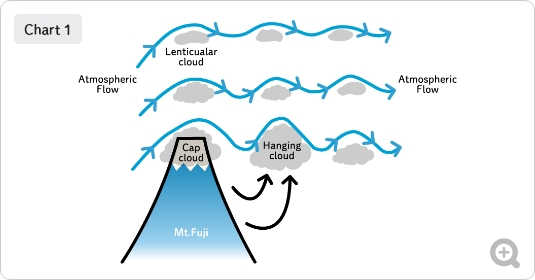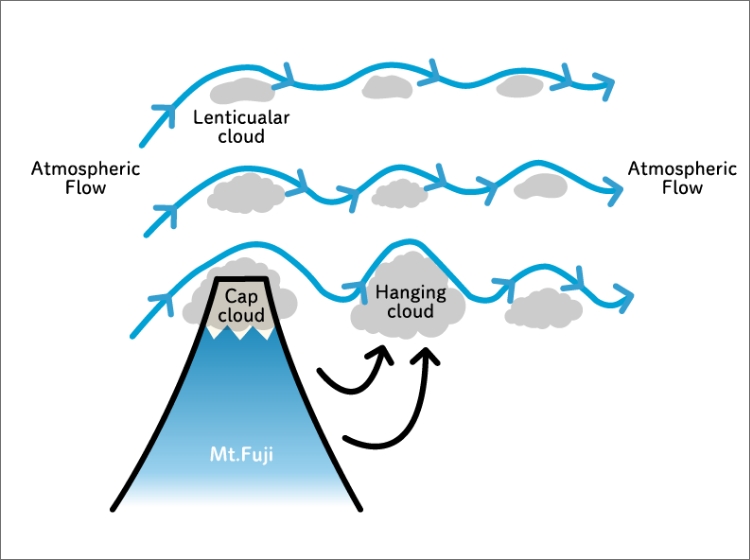Mt. Fuji Trivia
- Home
- Mt. Fuji trivia Cloud Watching
Learn about Mt. Fuji’s natural weather phenomena!
Kantenboki
What is Kantenboki ?
Kantenboki is a weather forecasting technique that predicts future weather changes based on changes in natural phenomena in the atmosphere, such as the shape of clouds, wind, air temperature, and the visibility of distant landscapes.
Kantenboki is passed down generation to generation as local proverbs. These are a form of wisdom for people in agriculture and fishery, whose lives are greatly influenced by the weather.
(Navigator: Imafuji Grandpa)
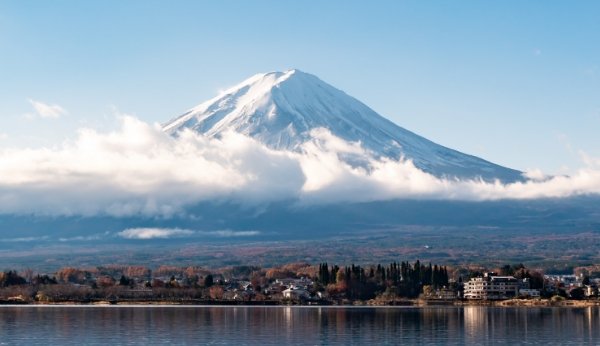

-
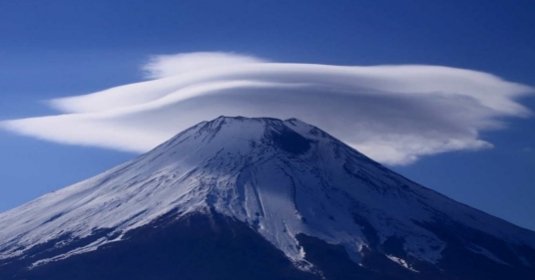
Kantenboki No.01
Cap Clouds
Cap Clouds are one of the most characteristic cloud shapes of Mt. Fuji. They are covered the area around the mountains summit as if Mt. Fuji is wearing a rice hat. The proverb says if Mt. Fuji wears a hat, it will rain in the near future. In fact, the probability of rain in the next 24hours after a Cap Cloud appears is 70% in fall, winter and spring and even 75% in the summer!
The ancient people were right about that ! Great observation.

-
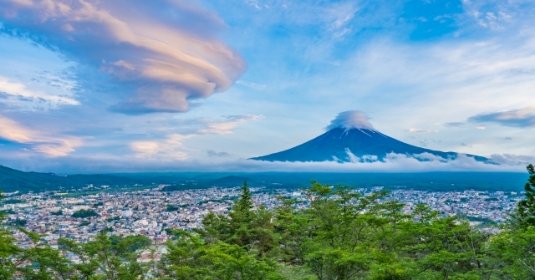
Kantenboki No.02
Hanging Clouds
Another characteristic cloud type of Mt. Fuji are Hanging Clouds. Hanging Clouds form on the leeward side and have a smooth shape like a flying saucer.
Locals call these clouds “amedawara”. When Hanging Clouds appear together with Cap Clouds the probability of rain is said to be about 80~85%.Be careful with that !

-
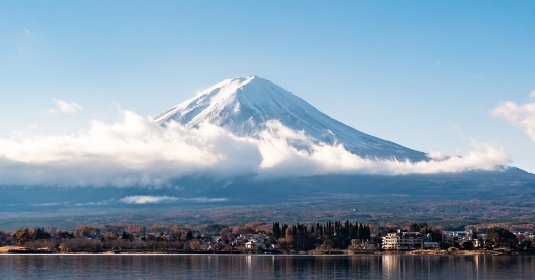
Kantenboki No.03
Headband Clouds and Belt Clouds
People living close to Mt. Fuji know another proverb: “If Mt. Fuji wears a headband, it’s gonna rain. If Mt. Fuji puts on a Belt, it’s gonna rain!”
A ring of clouds around the 5th station is called Belt Clouds (Obi Clouds) and a Ring around the 8th station is called Headband Clouds (Hachimaki Clouds).Mt. Fuji dresses like a real person It’s funny that the mountain wears a belt, a headband and even a hat

-
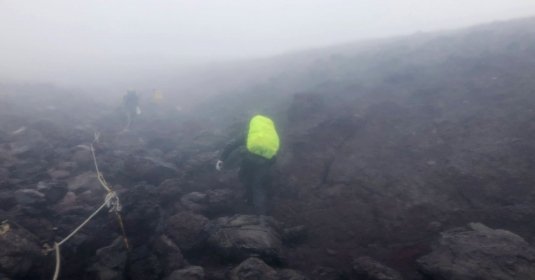
Kantenboki No.04
Strong winds at the summit
When Cap Clouds and Hanging Clouds appear, you have to count with strong winds at the summit, even if it’s not raining. When these cloud types form two or even three layers the weather is very stormy. So, before you start to climb the mountain, take a quick look at the summit and check that there are no clouds.
If the weather collapse, you should rethink for climbing plans. How about watching rare clouds while relaxing in the beautiful landscape?

-
Kantenboki No.05
The principle of forming Cap Clouds and Hanging Clouds. ①
Cap Clouds and Hanging Clouds form when:
-There is a constant supply of moist air in the sky
-There are strong winds
Both types of clouds are formed by air waves that are called Mountain Waves.Oh, of course! I can see that!

-
Kantenboki No.06
The principle of forming Cap Clouds and Hanging Clouds. ②
Please look at the Illustration No.06.
Lenticular Clouds, or Lens Clouds, are formed like a convex lens. Both Cap Clouds and Hanging Clouds are a type of Lenticular Clouds. When the atmosphere above is stable, waves in the air are more likely to be transmitted to the leeward side, which facilitates the formation of lens clouds. For Mt. Fuji, strong westerly and southwesterly winds result in the good conditions to form Lens Clouds.I really want to see that sometime!

-
Kantenboki No.07
The principle of forming Cap Clouds and Hanging Clouds. ③
Take another look at Illustration No.06.
Clouds form when air waves rise and disappear on descend. When Mountain Waves climb up to a summit Cap Clouds are formed. When they climb up again on the leeside after a Mountain, they form Hanging Clouds.Weather is so interesting!

-

Kantenboki No.08
When the weather improves.
Cap Clouds, when atmospheric pressure passes through. It’s tend to decrease gradually in size until they disappear. After this the weather will recover. Checking a weather map in conjunction with cloud watching helps to understand how the weather will be in the near future.
Let’s check the weather map, too.





